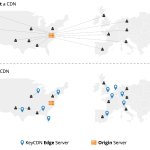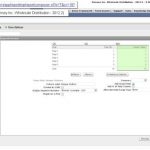Upselling is proven to increase ecommerce revenue, with targeted product recommendations responsible for up to 30% of revenue. In fact, back in 2006, Amazon reported that 35% of its revenues were a direct result of its cross sales and upsells. It is also a lot easier to sell to existing customers than to start from scratch with new customers and offering the right upsell at the right time can even earn customer loyalty. Analytics show that customer lifetime value increases when you upsell.
What is Upsell? Cross-sell?
Before we go too much further, we need to define what upsells and cross-sells are and the difference between them. Upselling is the practice of encouraging customers to purchase a comparable higher end product than another, while cross-selling
invites customers to buy related or complementary items. For example, if you suggest to a customer who just bought a new phone to also receive a case, that is a cross–sell. Upselling when the seller encourages the customer to spend more than they had originally intended, i.e. add-ons, packages, plans, etc.
Enough with all the talk about the advantages of upselling and cross-selling – in this article we are going to go over how we accomplished implementing a cross-sell feature in Netsuite within the customer’s cart, and product detail pages and the results that came with it.
Overview
To start with a little background in how this project came up, the customers’ site in which we were working with had a plethora of small related accessories and products that achieved the same result in a multitude of ways. However, most of these products were previously hidden deep inside specific, narrow categories given the nature of the sites’ inventory. This was the ideal situation for a cross-sell opportunity, and since we had ample room on the product detail page (PDP) and cart pages, we chose those locations.
Manual Related Items
We utilized Netsuite’s underlying Related records feature. Items can be manual set/selected on inventory/assembly/service items alike. They can also be arranged in order of importance and display for use on product detail and cart pages.
Automatic Related Items
It would be quite a chore to go through and manually select each related item for EVERY record in your account. Luckily, our solution automatically builds and adds the related records to each item and you can still add, remove, and edit any automatically entered item.
Results
With any drastic change to a website’s main pages, you can sometimes experience an initial drop-off in existing customers’ conversion rates and overall order value. This is due in part to them becoming frustrated over “change” in something that was previously comfortable to use. Thankfully this did not happen in our case, but to further alleviate this potential confounding variables we looked at the average order size a year before the cross-sell changes outlined above, and after implementing the cross-sell solution. We found that the Avg. Order Value increased by 11.29%! I believe we can chalk that up in the win category.
Conclusion
If you have never thought about using upselling or cross-selling as a way to improve your company’s revenue, then what better time than now to start that initiative. Analytically speaking, upselling is more effective than cross-selling in terms of generating more revenue. However, it is not always practical to upsell given the product at hand being sold. There are cases when cross-selling makes more sense (like in our situation above), and there are also situations where both methods can be used together.
If you are interested in which method is best for your application, please do not hesitate to reach out to us. We are always more than happy to discuss your website goals / problems alike and how we could incorporate our solutions to satisfy them.
More from Fourth Wave
Kevin Carpenter
Latest posts by Kevin Carpenter (see all)
- How to Increase eCommerce Revenue With Upsells and Cross-sells: Cart and Product Detail Page - September 8, 2020
- Netsuite 2020.2 Update: Data-center URL deprecation + What You Need To Know - August 8, 2020
- Site Builder Performance Upgrades - July 19, 2020
- Protect Your Online Forms from Bots & Spam - October 22, 2019
- What to know about schema.org and microdata tagging - May 2, 2019








